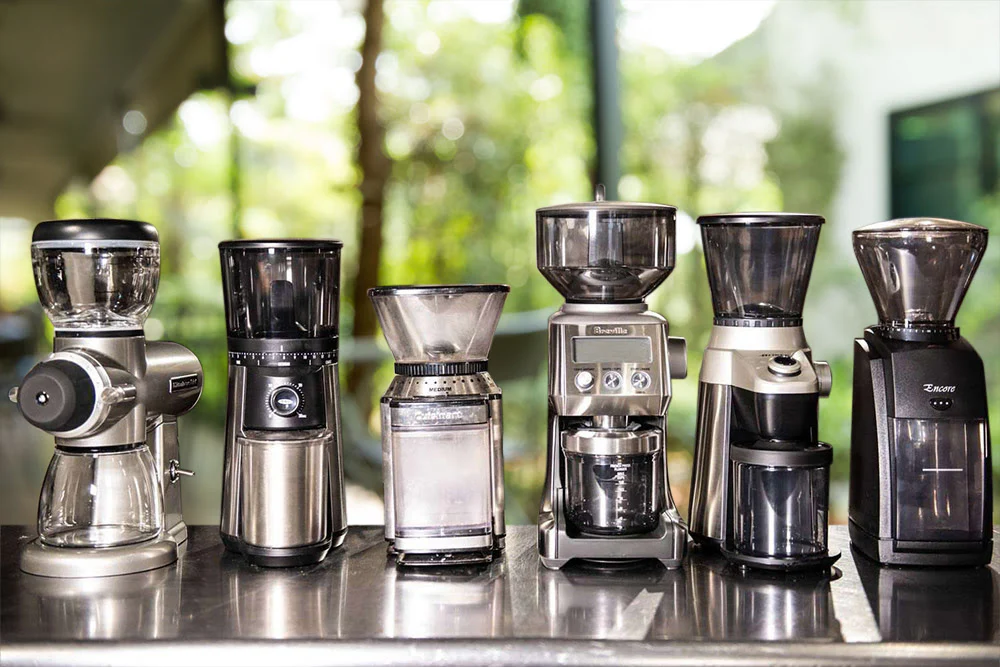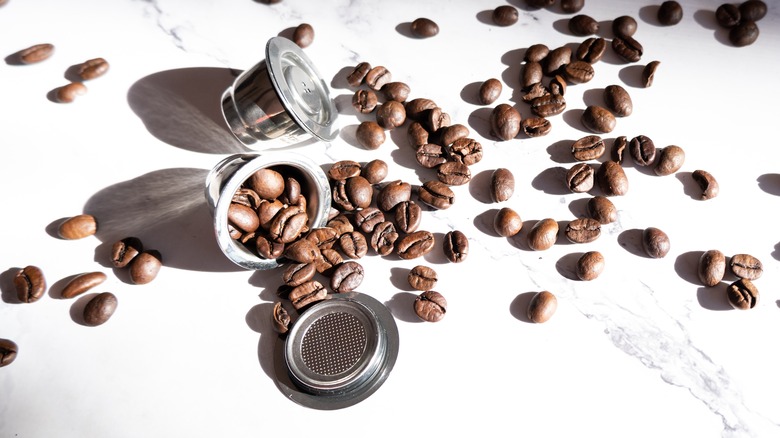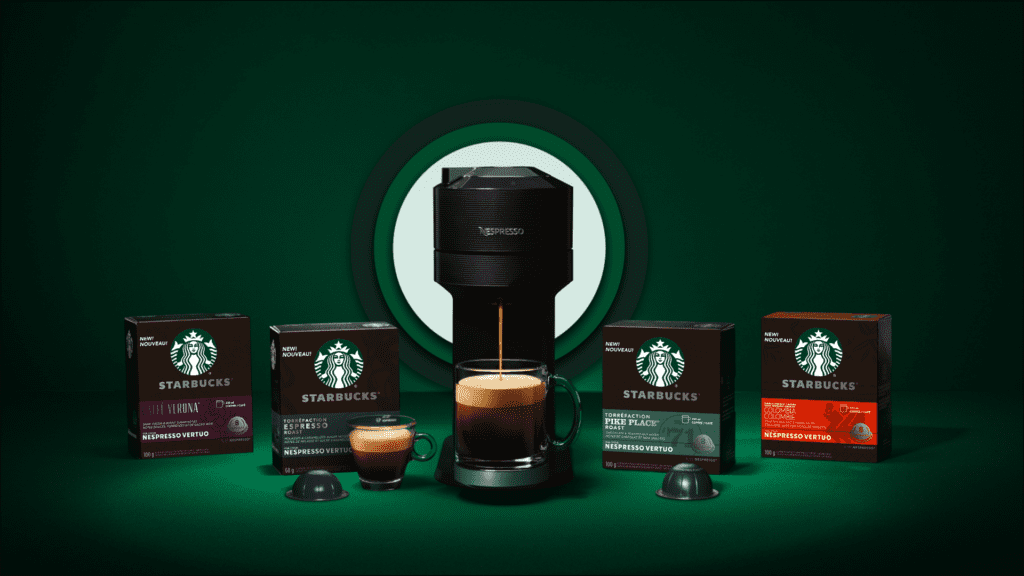Welcome to the ultimate guide to coffee grinders! If you’re serious about your coffee, you know that the quality of your grind is crucial to the final brew. Whether you’re a seasoned barista or just starting your journey into the world of coffee, understanding the ins and outs of coffee grinders can make a significant difference in your daily cup.

Coffee grinders are the unsung heroes of the coffee-making process. They transform whole coffee beans into the perfect grind size, unlocking the rich flavors and aromas hidden within. With the right grinder, you can elevate your coffee experience, ensuring each cup is as fresh and flavorful as possible.
In this guide, we’ll explore the different types of coffee grinders available, from basic blade grinders to sophisticated burr grinders. We’ll delve into why grind size matters and how to choose the right grinder for your brewing method. By the end, you’ll have a thorough understanding of how to select, use, and maintain your coffee grinder, ensuring you get the most out of your coffee beans every time.

Types of Coffee Grinders
When it comes to brewing the perfect cup of coffee, the type of grinder you use can make all the difference. There are several types of coffee grinders available in the market, each designed to meet different needs and preferences. In this section, we’ll explore the main types of coffee grinders and their specific use cases to help you make an informed decision.
Blade Grinders
Blade grinders are the most common and affordable type of coffee grinder. They use a set of spinning blades to chop the coffee beans into smaller pieces. Here’s a closer look at how they work, their advantages and disadvantages, and when they are best used.

How They Work: Blade grinders operate with a simple mechanism where the blades rotate at high speed, slicing through the coffee beans. The grind size can be adjusted by controlling the grinding time—longer grinding results in finer particles.
Advantages:
- Affordability: Blade grinders are usually less expensive than other types.
- Simplicity: Easy to use and clean, making them suitable for beginners.
- Speed: Quick grinding process, ideal for those in a hurry.
Disadvantages:
- Inconsistent Grind: The chopping action often leads to uneven grind sizes, which can affect the flavor of the coffee.
- Heat Generation: High-speed blades can generate heat, which may alter the taste of the coffee beans.
Ideal Use Cases: Blade grinders are best for those who are new to coffee grinding or need a budget-friendly option. They are suitable for drip coffee makers and French press methods where grind consistency is less critical.
Burr Grinders
Burr grinders are a step up from blade grinders, offering more consistency and control over the grind size. They use two revolving abrasive surfaces (burrs) to crush the coffee beans to a uniform size. Burr grinders are generally preferred by coffee enthusiasts and professionals for their precision.

How They Work: Burr grinders work by feeding the coffee beans between two burrs, which grind the beans into uniform particles. The distance between the burrs can be adjusted to control the grind size.
Why Preferred Over Blade Grinders:
- Consistent Grind: Provides a uniform grind size, essential for optimal extraction.
- Less Heat: Operates at lower speeds, reducing heat generation and preserving the coffee’s flavor.
Burr grinders come in two main subtypes: flat burr and conical burr.
Flat Burr: Flat burr grinders feature two parallel burrs with sharp edges. The beans are ground between these flat surfaces, providing a consistent grind.
Unique Features:
- Precision: Offers excellent control over grind size, making it suitable for espresso.
- Uniformity: Produces a very consistent grind, ideal for fine to medium grinds.
Benefits:
- Consistency: Ensures a uniform particle size for even extraction.
- Flavor Preservation: Minimizes heat buildup, preserving the coffee’s aroma and flavor.
Ideal Use Cases: Flat burr grinders are perfect for espresso enthusiasts and those who prefer fine to medium grind sizes. They are commonly used in commercial settings and by serious home baristas.
Conical Burr: Conical burr grinders use cone-shaped burrs to grind the beans. This design helps to achieve a precise and uniform grind with minimal heat generation.
Distinct Characteristics:
- Shape: The cone shape allows for efficient and cool grinding.
- Versatility: Suitable for a wide range of grind sizes, from coarse to fine.
Advantages:
- Heat Reduction: Generates less heat compared to flat burr grinders, preserving the coffee’s integrity.
- Ease of Use: Often quieter and easier to clean than flat burr grinders.
When to Use Them: Conical burr grinders are ideal for those who need a versatile grinder capable of producing a range of grind sizes. They are suitable for various brewing methods, including pour-over, Aeropress, and espresso.
Manual Grinders
Manual grinders are operated by hand, offering a portable and affordable option for coffee lovers. They are perfect for those who enjoy a hands-on approach to coffee preparation.

Functionality: Manual grinders use a hand crank to turn the burrs, grinding the coffee beans at a slow, controlled pace. They typically feature conical burrs for consistent grind size.
Benefits:
- Portability: Lightweight and compact, ideal for travel.
- Quiet Operation: Makes less noise compared to electric grinders.
- Control: Allows for precise control over grind size.
Situations Where They Are Most Useful: Manual grinders are best for coffee enthusiasts who appreciate the ritual of hand-grinding and for those who need a portable grinder for travel or camping.
Electric Grinders
Electric grinders offer convenience and efficiency, making them a popular choice for home and commercial use. They come in both blade and burr varieties.

How They Operate: Electric grinders use a motor to power the grinding mechanism, allowing for quick and effortless grinding.
Benefits:
- Convenience: Requires minimal effort, making it suitable for daily use.
- Speed: Quickly grinds large quantities of coffee beans.
- Consistency: Electric burr grinders provide consistent grind sizes with ease.
Scenarios Where They Are Preferred Over Manual Grinders: Electric grinders are ideal for those who want a fast, effortless grinding experience. They are perfect for busy households, offices, and coffee shops where large volumes of coffee are brewed regularly.
By understanding the different types of coffee grinders and their specific use cases, you can choose the one that best suits your needs and preferences. Whether you opt for the simplicity of a blade grinder, the precision of a burr grinder, the hands-on approach of a manual grinder, or the convenience of an electric grinder, the right choice will elevate your coffee experience.
How Coffee Grinders Work
To truly appreciate the difference a coffee grinder can make, it’s essential to understand how these machines work. The grinding process is a critical step in coffee preparation, as it directly impacts the flavor and texture of your brew. In this section, we’ll dive into the mechanics behind different types of grinders and explore how each one affects your coffee’s taste profile.
The Grinding Process:
At its core, the grinding process involves breaking down whole coffee beans into smaller particles. This increases the surface area of the beans, allowing water to extract the soluble compounds more efficiently during brewing. The size and uniformity of these particles are crucial for achieving the desired flavor and strength in your coffee.

Mechanics Behind Different Types of Grinders
Blade Grinders
Blade grinders use a simple yet effective mechanism to chop coffee beans into smaller pieces. Here’s a breakdown of how they work:
- Mechanism: A pair of spinning blades rotate at high speed to cut the beans.
- Grind Size Control: The grind size is controlled by the grinding duration—the longer you grind, the finer the particles.
- Impact on Flavor and Texture: Blade grinders often produce an inconsistent grind size, leading to uneven extraction. This can result in a mix of over-extracted (bitter) and under-extracted (sour) flavors in the same cup. Additionally, the high-speed blades generate heat, which can affect the coffee’s flavor by causing the beans’ oils to evaporate prematurely.
Burr Grinders
Burr grinders are known for their precision and consistency, making them a favorite among coffee enthusiasts. They work through a different mechanism:
- Mechanism: Burr grinders use two abrasive surfaces (burrs) to crush the coffee beans into uniform particles. The distance between the burrs can be adjusted to achieve the desired grind size.
- Grind Size Control: Provides precise control over grind size, ensuring consistency.
- Impact on Flavor and Texture: The uniform grind size produced by burr grinders ensures even extraction, resulting in a balanced and flavorful cup of coffee. The slower grinding process generates less heat, preserving the beans’ natural flavors and aromas.
Subtypes of Burr Grinders:
- Flat Burr Grinders: Feature two parallel burrs with sharp edges. They offer excellent control over grind size and are ideal for fine to medium grinds. Flat burr grinders are known for their precision, making them perfect for espresso lovers.
- Conical Burr Grinders: Use cone-shaped burrs to grind the beans. They are versatile and can produce a wide range of grind sizes, from coarse to fine. Conical burr grinders generate less heat and are generally quieter than flat burr grinders.
Manual Grinders
Manual grinders provide a hands-on approach to grinding coffee beans. They work through a simple yet effective mechanism:
- Mechanism: Manual grinders use a hand crank to rotate the burrs and grind the beans. Most manual grinders feature conical burrs for consistent grind size.
- Grind Size Control: The grind size is adjusted by changing the distance between the burrs, similar to electric burr grinders.
- Impact on Flavor and Texture: Manual grinders offer precise control over grind size, ensuring uniform particles and even extraction. They generate minimal heat, preserving the beans’ natural flavors. The manual process allows for a more intimate connection with the coffee-making ritual.
Electric Grinders
Electric grinders offer convenience and efficiency, making them popular for home and commercial use. They operate through a motorized mechanism:
- Mechanism: Electric grinders use a motor to power the grinding mechanism, which can be either blade or burr. The motor allows for quick and effortless grinding.
- Grind Size Control: Electric burr grinders provide precise control over grind size, while electric blade grinders rely on grinding time for size control.
- Impact on Flavor and Texture: Electric burr grinders offer the same benefits as manual burr grinders—consistent grind size and even extraction. Electric blade grinders, however, can still suffer from inconsistency and heat generation, potentially impacting the coffee’s flavor.
Impact on Flavor and Texture
The grind size and consistency are crucial factors in determining the flavor and texture of your coffee. Here’s how they impact your brew:

- Consistency: A uniform grind size ensures even extraction, leading to a balanced and flavorful cup. Inconsistent grinds result in uneven extraction, causing a mix of bitter and sour flavors.
- Grind Size: The appropriate grind size varies with the brewing method. For example, espresso requires a fine grind, while French press uses a coarse grind. Using the correct grind size for your brewing method enhances the coffee’s taste and texture.
- Heat Generation: Excessive heat during grinding can cause the beans’ oils to evaporate, diminishing the coffee’s aroma and flavor. Burr grinders, especially conical ones, generate less heat compared to blade grinders, preserving the beans’ natural qualities.
Understanding how different types of grinders work and their impact on the coffee’s flavor and texture will help you choose the right grinder for your needs. Whether you prefer the affordability of a blade grinder, the precision of a burr grinder, the hands-on approach of a manual grinder, or the convenience of an electric grinder, selecting the right tool is key to brewing the perfect cup.
Why Grind Size Matters?
When it comes to making espresso, the grind size of your coffee beans is absolutely critical. Espresso is a brewing method that requires precision and consistency to extract the perfect shot, and the grind size plays a central role in achieving that balance. Let’s dive into why the proper grinding is essential for espresso, the importance of grind size, and how different grinders can affect the quality of your espresso.

The Critical Role of Proper Grinding in Making Espresso
Espresso is known for its rich, concentrated flavor and creamy texture, achieved through a unique brewing process. This process involves forcing hot water through finely-ground coffee at high pressure, typically between 25 to 30 seconds. The grind size must be fine enough to create the necessary resistance for proper extraction, but not so fine that it clogs the machine or results in over-extraction.
- Pressure and Extraction: The right grind size ensures that the water flows through the coffee evenly, extracting the desirable flavors and oils while avoiding bitterness or sourness. An inconsistent grind can lead to uneven extraction, resulting in a less-than-perfect shot.
- Crema Formation: Proper grinding also affects the formation of crema, the golden, creamy layer on top of a well-pulled espresso shot. A consistent fine grind helps produce a thick, stable crema, enhancing the espresso’s texture and visual appeal.
The Importance of Grind Size
The grind size directly impacts the rate at which water flows through the coffee grounds, influencing the extraction process. Here’s how different grind sizes can affect your espresso:
- Too Fine: If the grind is too fine, the water will struggle to pass through the coffee, leading to over-extraction. This results in a bitter, overly strong espresso with a harsh aftertaste.
- Too Coarse: If the grind is too coarse, the water will pass through too quickly, leading to under-extraction. This produces a weak, watery espresso lacking depth and richness.
- Just Right: A consistent fine grind ensures that the water extracts the right amount of flavor compounds, yielding a balanced, flavorful shot with the perfect amount of crema.
How Different Grinders Affect the Quality of Espresso
The type of grinder you use can significantly impact the quality of your espresso. Here’s a look at how various grinders perform:
Blade Grinders:
- Performance: Blade grinders are not ideal for espresso due to their inconsistent grind size. The uneven particles can lead to an uneven extraction, resulting in a subpar espresso.
- Heat Generation: The high-speed blades can generate heat, which may alter the flavor of the coffee.
Burr Grinders:
- Performance: Burr grinders are the preferred choice for espresso enthusiasts. They provide a consistent grind size, essential for even extraction. The ability to fine-tune the grind size ensures you can achieve the perfect resistance for espresso brewing.
- Heat Management: Burr grinders operate at lower speeds, generating less heat and preserving the coffee’s natural flavors.
Manual Grinders:
- Performance: Manual grinders, often equipped with conical burrs, can produce a consistent grind size suitable for espresso. They offer precise control over the grind, making them a great option for those who enjoy a hands-on approach.
- Portability: While they require more effort, manual grinders are portable and don’t generate heat, preserving the coffee’s aroma and flavor.
Electric Grinders:
- Performance: Electric burr grinders are highly efficient and provide consistent results with minimal effort. They allow for quick adjustments to grind size, making it easy to dial in the perfect setting for espresso.
- Convenience: Ideal for home use or in a commercial setting, electric grinders combine convenience with precision, ensuring a high-quality espresso every time.
In conclusion, the grind size is a pivotal factor in the espresso-making process. Understanding its importance and how different grinders affect the quality of your espresso can help you make the best choice for your brewing needs. Whether you opt for a burr grinder, manual grinder, or electric grinder, ensuring a consistent and appropriate grind size will elevate your espresso experience, delivering a rich, flavorful shot every time.
How to Choose the Right Grinder
Choosing the right coffee grinder can be a game-changer for your coffee experience. Here are some key factors to consider:

- 1. Grind Consistency: Consistency is crucial for a balanced flavor. Burr grinders are generally more consistent than blade grinders.
- 2. Grind Size Range: Consider the range of grind sizes the grinder offers. Different brewing methods require different grind sizes—from coarse for French press to fine for espresso.
- 3. Capacity: Think about how much coffee you typically grind at once. If you make large batches, a grinder with a bigger capacity will be more convenient.
- 4. Ease of Use and Cleaning: Some grinders are easier to use and clean than others. Consider how much effort you’re willing to put into maintenance.
- 5. Price: Grinders range from affordable to premium. Determine your budget and find the best grinder within your price range.
- 6. Noise Level: If noise is a concern, look for grinders that are quieter in operation.
- 7. Speed and Heat: High-speed grinders can generate heat, which might affect the flavor of your coffee. Burr grinders, especially conical ones, usually operate at lower speeds, generating less heat.
Best Grinders for Different Brewing Methods
1. Espresso:
- Recommended Grinder: Conical Burr Grinder
- Example: Baratza Sette 270
- Reason: Provides a consistent fine grind essential for espresso.
2. Drip Coffee Maker:
- Recommended Grinder: Flat Burr Grinder
- Example: Breville Smart Grinder Pro
- Reason: Offers consistent medium grind, perfect for drip coffee.
3. French Press:
- Recommended Grinder: Manual Burr Grinder
- Example: Hario Skerton Pro
- Reason: Produces a uniform coarse grind, ideal for French press.
4. Pour-Over:
- Recommended Grinder: Electric Burr Grinder
- Example: Baratza Encore
- Reason: Allows for precise control over medium-fine grind size.
5. Aeropress:
- Recommended Grinder: Adjustable Burr Grinder
- Example: Porlex Mini
- Reason: Versatile grinder that can easily switch between fine and medium grinds.
Disclosure: Our blog contains affiliate links to products. We may receive a commission for purchases made through these links. However, this does not impact our reviews and comparisons. We try our best to keep things fair and balanced, in order to help you make the best choice for you.






One Response